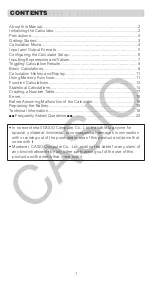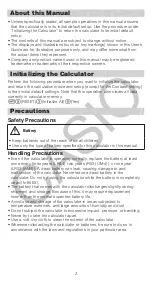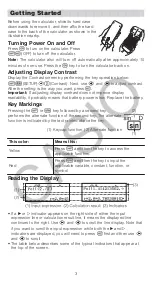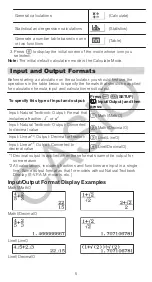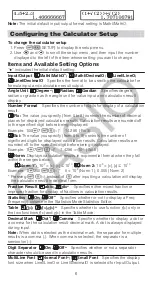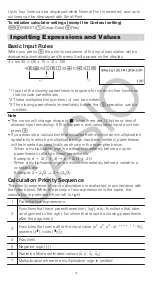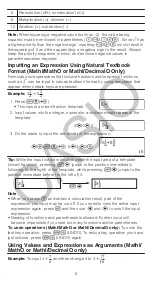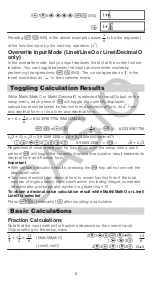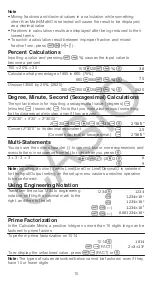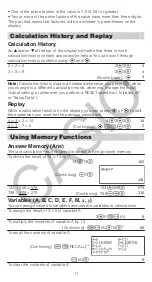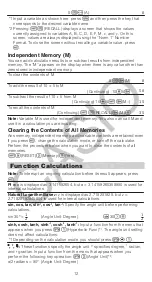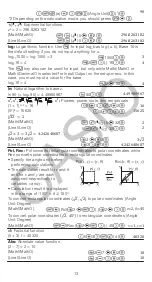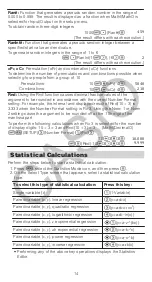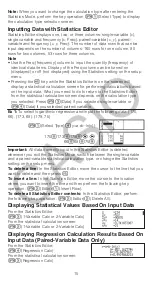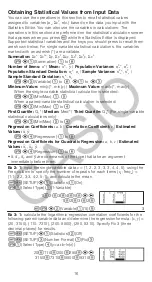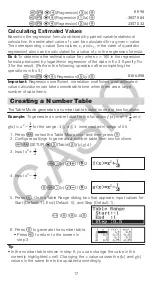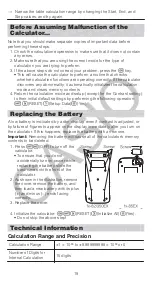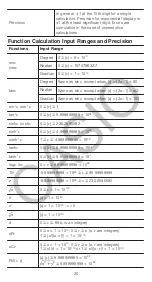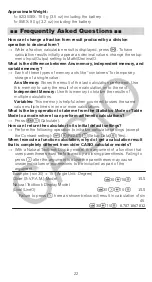
Ran#:
Function that generates a pseudo random number in the range of
0.000 to 0.999. The result is displayed as a fraction when MathI/MathO is
selected for Input/Output on the setup menu.
To obtain random three-digit integers
1000
(Ran#)
459
(The result differs with each execution.)
RanInt#:
Function that generates a pseudo random integer between a
specified start value and end value.
To generate random integers in the range of 1 to 6
(RanInt)1
(,) 6
2
(The result differs with each execution.)
n
P
r
,
n
C
r
:
Permutation (
n
P
r
) and combination (
n
C
r
) functions.
To determine the number of permutations and combinations possible when
selecting four people from a group of 10
Permutations:
10
(
n
P
r
) 4
5040
Combinations:
10
(
n
C
r
) 4
210
Rnd:
Using the Rnd function causes decimal fraction values of the
argument to be rounded in accordance with the current Number Format
setting. For example, the internal and displayed result of Rnd(10 ÷ 3) is
3.333 when the Number Format setting is Fix 3. Using the Norm 1 or Norm
2 setting cause the argument to be rounded off at the 11th digit of the
mantissa part.
To perform the following calculations when Fix 3 is selected for the number
of display digits: 10 ÷ 3 × 3 and Rnd(10 ÷ 3) × 3 (MathI/DecimalO)
(SETUP)
(Number Format)
(Fix)
10
3
3
(Rnd) 10
3
3
10.000
9.999
Statistical Calculations
Perform the steps below to start a statistical calculation.
1. Press
, select the Statistics Mode icon, and then press
.
2. On the Select Type screen that appears, select a statistical calculation
type.
To select this type of statistical calculation:
Press this key:
Single-variable (
x
)
(1-Variable)
Paired-variable (
x
,
y
), linear regression
(y=a+bx)
Paired-variable (
x
,
y
), quadratic regression
(y=a+bx+cx
2
)
Paired-variable (
x
,
y
), logarithmic regression
(y=a+b
・
ln(x))
Paired-variable (
x
,
y
),
e
exponential regression
(y=a
・
e
^(bx))
Paired-variable (
x
,
y
),
ab
exponential regression
(y=a
・
b^x)
Paired-variable (
x
,
y
), power regression
(y=a
・
x^b)
Paired-variable (
x
,
y
), inverse regression
(y=a+b/x)
• Performing any of the above key operations displays the Statistics
Editor.
14


